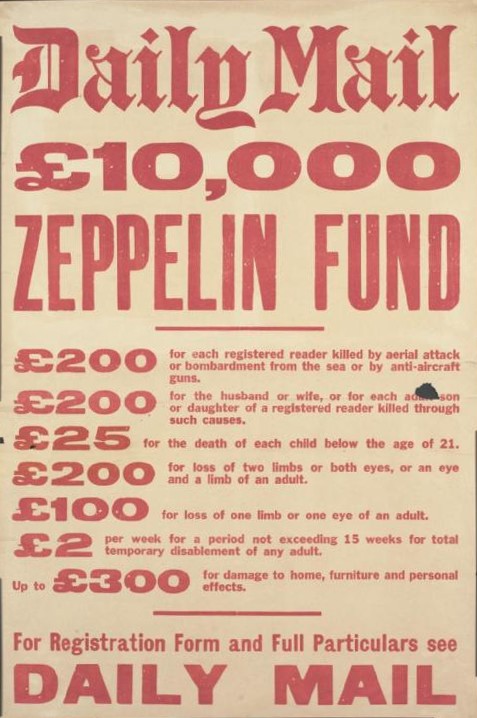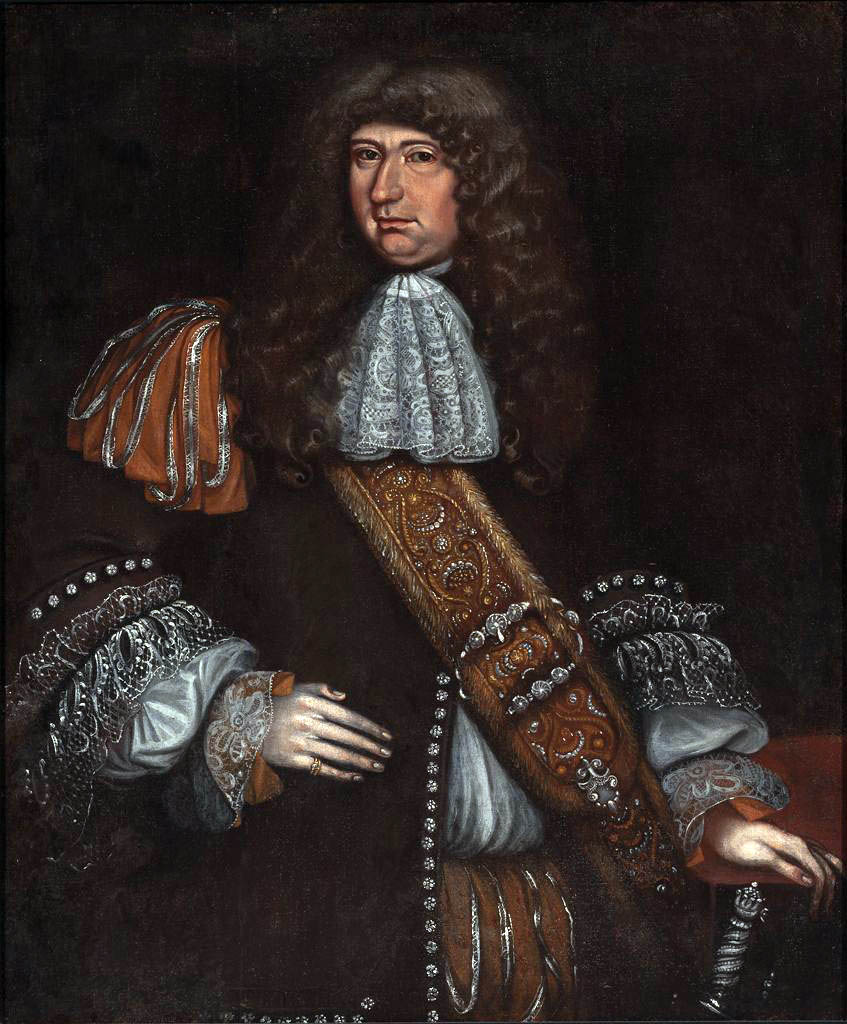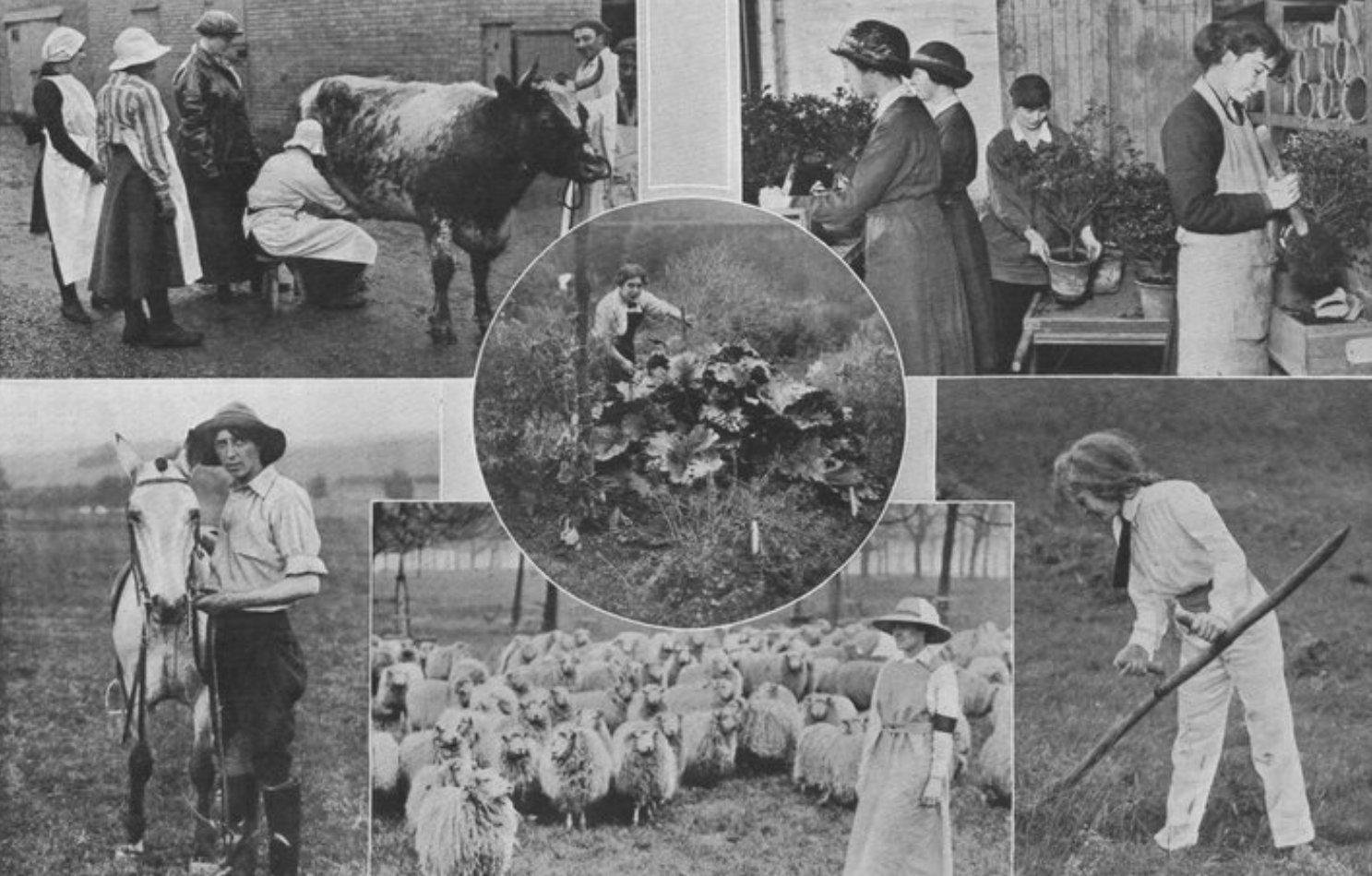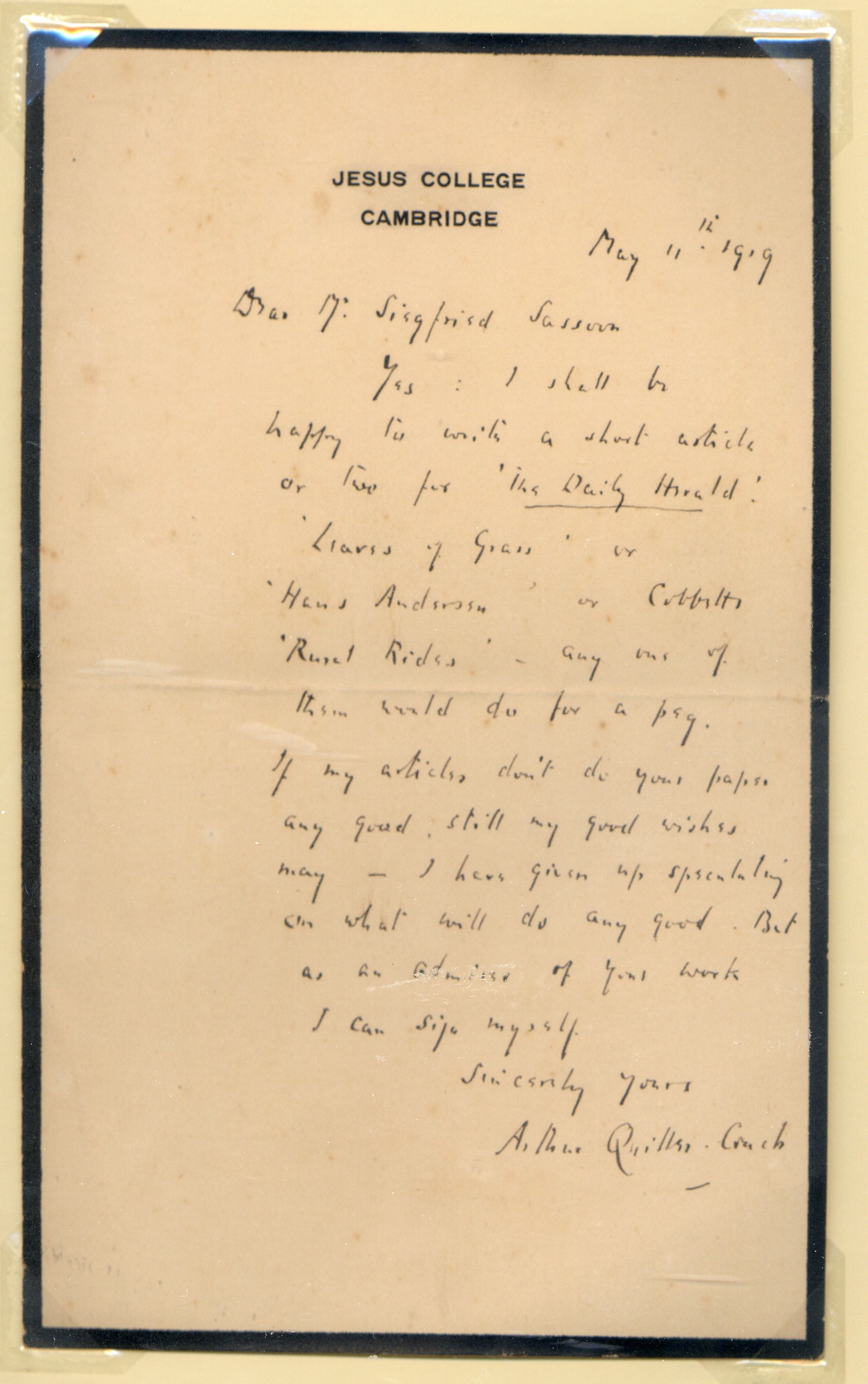|
Maud Arncliffe Sennett
Alice Maud Arncliffe Sennett also known with the stage name of Mary Kingsley (born Alice Maud Mary Sparagnapane; 4 February 1862 – 15 September 1936) was an English actress and suffragist and a suffragette, arrested four times for her activism. Life Sennett was born as Alice Maud Mary Sparagnapane in London to a family who owned a Christmas cracker and confectionery business. Her mother was Aurelia Williams and her father was Gaudente Sparagnapane. Sennet became an actress taking the name Mary Kingsley, and her performance as Lady Macbeth was given high praise in the press, and her performance as Joan of Arc at the Shakespeare Commemoration of 1889, led to a portrait of her in character being painted and hung in the Shakespeare Memorial at Stratford-upon-Avon. Her acting career included touring mainland Britain and she also spent a year in Australia. Her confidence with public speaking would be a skill she would use again, 'high elocutionary powers'. Elizabeth Crawford, 'Sennet ... [...More Info...] [...Related Items...] OR: [Wikipedia] [Google] [Baidu] |
Lena Connell
Adelin Beatrice "Lena" Connell, also known professionally as Beatrice Cundy, (27 July 1875 – 4 March 1949) was a British suffragette and a well-known photographer whose work is held in the National Portrait Gallery, London. Life Connell was born in London in 1875 to Frederic and Catherine Connell. Her father (and his father) had made high-class watches known as chronometers, but her father's interest moved to photography before he became a salesperson. The photography business made his daughters Dora and Alina into photographer's assistants and Adelina/Lena's career path was decided. Connell started her own photography business and employed female staff. She was said to be the first woman photographer to take pictures of male subjects. Connell took pictures of leading members of the Women's Freedom League as well as Emmeline Pankhurst and other suffrage leaders. She was intrigued by the suffrage cause after she was employed to take pictures of the suffragette Gladice Keev ... [...More Info...] [...Related Items...] OR: [Wikipedia] [Google] [Baidu] |
Women's National Anti-Suffrage League
The Women's National Anti-Suffrage League (1908–18) was established in London on 21 July 1908. Its aims were to oppose women being granted the vote in parliamentary elections, although it did support their having votes in local government elections. It was founded at a time when there was a resurgence of support for the women's suffrage movement. Origins An anti-suffrage correspondence had taken place in the pages of ''The Times'' through 1906–07, with further calls for leadership of the anti-suffrage movement being placed in ''The Spectator'' in February 1908. Possibly as early as 1907, a letter was circulated to announce the creation of a National Women's Anti-Suffrage Association and inviting recipients to become a member of the Central Organising Committee or a member. It was issued under the names of thirty peeresses who became prominent anti-suffragists, as well as a number of peers and MPs. However, the first meeting of the Women's National Anti-Suffrage League only ... [...More Info...] [...Related Items...] OR: [Wikipedia] [Google] [Baidu] |
Northern Men's League For Women's Suffrage
The Northern Men's Federation for Women's Suffrage was an organisation which was active in Scotland during the later part of the campaign for women's suffrage. Formation In 1907, after the imprisonment of his wife, Maggie Moffat for suffrage activity, Graham Moffat formed the Glasgow Men's League for Women's Suffrage. It was intended to offer support and solidarity for the husbands and brothers of women involved in the campaign, as well as male sympathisers. Many of the members were politically active and powerful men who wanted to use their influence in the campaign. In July 1913, organised by Maud Arncliffe Sennett, a large delegation of Scottish men travelled to London for an audience with the prime minister, H. H. Asquith, to discuss extending the franchise to women. The request for a meeting was refused. A direct result of this failure to meet with them was that they formed the new campaigning organisation. The artist John Wilson McLaren wrote a verse about the trip: ::We ... [...More Info...] [...Related Items...] OR: [Wikipedia] [Google] [Baidu] |
Daily Mail
The ''Daily Mail'' is a British daily middle-market tabloid newspaper and news websitePeter Wilb"Paul Dacre of the Daily Mail: The man who hates liberal Britain", ''New Statesman'', 19 December 2013 (online version: 2 January 2014) published in London. Founded in 1896, it is the United Kingdom's highest-circulated daily newspaper. Its sister paper ''The Mail on Sunday'' was launched in 1982, while Scottish and Irish editions of the daily paper were launched in 1947 and 2006 respectively. Content from the paper appears on the MailOnline website, although the website is managed separately and has its own editor. The paper is owned by the Daily Mail and General Trust. Jonathan Harmsworth, 4th Viscount Rothermere, a great-grandson of one of the original co-founders, is the current chairman and controlling shareholder of the Daily Mail and General Trust, while day-to-day editorial decisions for the newspaper are usually made by a team led by the editor, Ted Verity, who succeede ... [...More Info...] [...Related Items...] OR: [Wikipedia] [Google] [Baidu] |
Black Friday (1910)
Black Friday was a suffragette demonstration in London on 18November 1910, in which 300 women marched to the Houses of Parliament as part of their campaign to secure voting rights for women. The day earned its name from the violence meted out to protesters, some of it sexual, by the Metropolitan Police and male bystanders . During the January 1910 general election campaign, H. H. Asquith—the Prime Minister and leader of the Liberal Party—promised to introduce a Conciliation Bill to allow a measure of women's suffrage in national elections. When he was returned to power, a committee made up of pro-women's suffrage MPs from several political parties was formed; they proposed legislation that would have added a million women to the franchise. The suffrage movement supported the legislation. Although MPs backed the bill and passed its first and second readings, Asquith refused to grant it further parliamentary time. On 18November 1910, following a breakdown in relati ... [...More Info...] [...Related Items...] OR: [Wikipedia] [Google] [Baidu] |
David Lloyd George
David Lloyd George, 1st Earl Lloyd-George of Dwyfor, (17 January 1863 – 26 March 1945) was Prime Minister of the United Kingdom from 1916 to 1922. He was a Liberal Party politician from Wales, known for leading the United Kingdom during the First World War, social reform policies including the National Insurance Act 1911, his role in the Paris Peace Conference, and negotiating the establishment of the Irish Free State. Early in his career, he was known for the disestablishment of the Church of England in Wales and support of Welsh devolution. He was the last Liberal Party prime minister; the party fell into third party status shortly after the end of his premiership. Lloyd George was born on 17 January 1863 in Chorlton-on-Medlock, Manchester, to Welsh parents. From around three months of age he was raised in Pembrokeshire and Llanystumdwy, Caernarfonshire, speaking Welsh. His father, a schoolmaster, died in 1864, and David was raised by his mother and her shoemaker brot ... [...More Info...] [...Related Items...] OR: [Wikipedia] [Google] [Baidu] |
Downing Street
Downing Street is a street in Westminster in London that houses the official residences and offices of the Prime Minister of the United Kingdom and the Chancellor of the Exchequer. Situated off Whitehall, it is long, and a few minutes' walk from the Houses of Parliament. Downing Street was built in the 1680s by Sir George Downing. For more than three hundred years, it has held the official residences of both the First Lord of the Treasury, the office now synonymous with that of the Prime Minister, and the Second Lord of the Treasury, the office held by the Chancellor of the Exchequer. The Prime Minister's official residence is 10 Downing Street, and the Chancellor's official residence is Number 11. The government's Chief Whip has an official residence at Number 12. In practice, these office-holders may live in different flats; the current Chief Whip actually lives at Number 9. The houses on the south side of the street were demolished in the 19th century to make way for ... [...More Info...] [...Related Items...] OR: [Wikipedia] [Google] [Baidu] |
Margaret Milne Farquharson
Margaret Milne McConnachie Farquharson (17 August 1884 – after 1936) was a Scottish suffragette, MP candidate and leader of the National Political League campaigning for Palestine. Life Farquharson was born in 1884. In 1908 she graduated with a master's degree from the University of Glasgow. She came to notice before World War I as a leader in the women's suffrage movement. In 1909 she was arrested as a suffragette and jailed for five days in Holloway Prison. She was a salaried organiser for the Women's Freedom League in Liverpool with Mary Adelaide Broadhurst. However the WFL failed to establish a voice distinct from the WSPU. Money was requested for a full-time organiser in Liverpool, but the salaried posts in Liverpool were not supported after January 1909. In 1911 the National Political League, NPL, was formed, led by its president Mary Adelaide Broadhurst. The league was an apolitical group supporting reform. Suffragette and funder Janie Allan, socialist Ethel Annak ... [...More Info...] [...Related Items...] OR: [Wikipedia] [Google] [Baidu] |
Mary Adelaide Broadhurst
Mary Adelaide Broadhurst (23 May 1860 – 8 December 1928) was a British agricultural reformer and radical. She was a leading suffragette who founded the National Land Council which trained women during the first world war to work on the land. After the war she championed the rights of Palestine and resisted the rise of Bolsheviks. Life Broadhurst was born in Chorlton-on-Medlock in 1860. Her parents were Maria (born Hutchinson) and William Broadhurst and she was their eldest child. Her father was a city councillor in Manchester, a bookkeeper and accountant. She was awarded an MA degree by the University of London and then taught at Liverpool Ladies' College. In 1880 she moved to Glasgow and worked as a science teacher at the Park School for Girls, Glasgow. She aimed to introduce practical laboratory study in the physical sciences and in 1882 also joined the Glasgow Natural History Society. Broadhurst's public life began as a leader in the women's suffrage movement. She and Margar ... [...More Info...] [...Related Items...] OR: [Wikipedia] [Google] [Baidu] |
Florence Gertrude De Fonblanque
Florence Gertrude de Fonblanque born Florence Gertrude Sparagnapane (22 July 1864 – 2 January 1949) was a British suffragist. She was the "Originator and leader of the women's suffrage march from Edinburgh to London 1912". Life Fonblanque was born in London to a family who owned the Sparagnapane Christmas cracker and confectionery business. Her mother was Aurelia Williams and her father was Gaudente Sparagnapane. She was taught in Brussels and at Brighton and like her elder sister, Maud Arncliffe Sennett, she became an actress. She married a fellow actor, Robert Edgar de Grenier de Fonblanque, when she claimed to be 21 but she was actually 26. Her husband bore the titles "marquis of Juliers", "count of Hauteserre", and "count of Fonblanque". However, despite his family descending from a noble French family, these were false titles of nobility, first mistakenly mentioned by Edward Barrington de Fonblanque in a 1874 book. Like her sister she took an interest in women's suffrage. ... [...More Info...] [...Related Items...] OR: [Wikipedia] [Google] [Baidu] |
Force-feeding (suffragettes)
Force-feeding is the practice of feeding a human or animal against their will. The term ''gavage'' (, , ) refers to supplying a substance by means of a small plastic feeding tube passed through the nose ( nasogastric) or mouth (orogastric) into the stomach. Of humans In psychiatric settings Within some countries, in extreme cases, patients with anorexia nervosa who continually refuse significant dietary intake and weight restoration interventions may be involuntarily fed by force via nasogastric tube under restraint within specialist psychiatric hospitals. Such a practice may be highly distressing for both anorexia patients and healthcare staff. In prisons Some countries force-feed prisoners when they go on hunger strike. It has been prohibited since 1975 by the Declaration of Tokyo of the World Medical Association, provided that the prisoner is "capable of forming an unimpaired and rational judgment." The violation of this prohibition may be carried out in a manner that ... [...More Info...] [...Related Items...] OR: [Wikipedia] [Google] [Baidu] |
Daily Herald (United Kingdom)
The ''Daily Herald'' was a History of British newspapers, British daily newspaper, published in London from 1912 to 1964 (although it was weekly during the First World War). It was published in the interest of the labour movement and supported the Labour Party (UK), Labour Party. It underwent several changes of management before ceasing publication in 1964, when it was relaunched as ''The Sun (United Kingdom), The Sun'', in its pre-Rupert Murdoch, Murdoch form. Origins In December 1910 the printers' union, the London Society of Compositors (LSC), became engaged in an industrial struggle to establish a 48-hour workweek and started a daily strike bulletin called ''The World''. Will Dyson, an Australian artist in London, contributed a cartoon. From 25 January 1911 it was renamed the ''Daily Herald'' and was published until the end of the strike in April 1911. At its peak it had daily sales of 25,000. Ben Tillett, the Stevedore, dockers' leader, and other radical trade union ... [...More Info...] [...Related Items...] OR: [Wikipedia] [Google] [Baidu] |
.jpeg)


.png)





